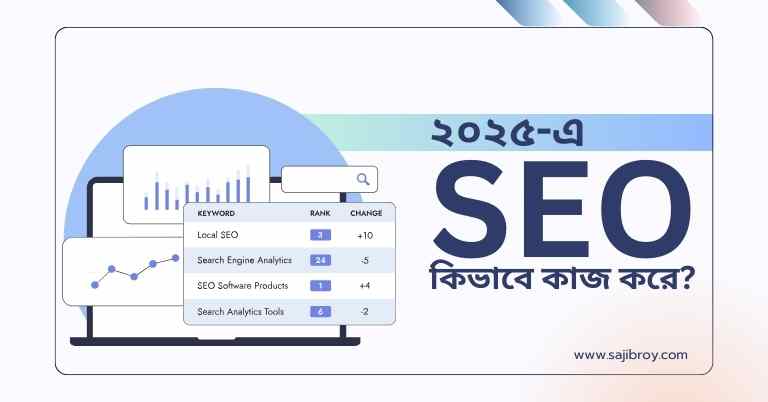To measure SEO performance, track metrics such as organic traffic, keyword rankings, SERP visibility, click-through rate, bounce rate, website authority over time, backlinks, and page speed.
Search Engine Optimization (SEO) is a crucial aspect of digital marketing that can significantly influence your online presence and business growth. However, simply implementing SEO strategies is not enough. To ensure your efforts are yielding the desired results, it’s essential to measure your SEO performance regularly. This comprehensive guide will walk you through the key metrics and tools you need to effectively evaluate your SEO success.
Let's See the Topic Overview
Importance Of Measuring SEO Performance
Understanding the significance of measuring SEO performance is crucial for the success of any website. In today’s competitive online landscape, search engine optimization (SEO) plays a pivotal role in attracting organic traffic, improving visibility, and increasing conversions. However, without proper measurement and tracking of SEO metrics, it becomes challenging to gauge the effectiveness of your strategies and make necessary adjustments to optimize results.
Understanding the significance of measuring SEO performance
Measuring and tracking SEO performance provides valuable insights into the success of your efforts. It allows you to identify which strategies are working and which ones are not, helping you allocate resources effectively and focus on areas that need improvement. By monitoring key metrics, such as organic traffic, keyword rankings, click-through rate, bounce rate, and backlinks, you can gain a comprehensive understanding of your website’s performance in search engine results pages (SERPs).
Why tracking SEO metrics is essential for success
Tracking SEO metrics is essential for success as it enables you to make data-driven decisions and continuously optimize your SEO strategies. It provides quantitative data that can be analyzed to identify trends, measure progress, and uncover potential opportunities. By regularly tracking key SEO metrics, you can ensure that your website is consistently improving its visibility, attracting more organic traffic, and ultimately driving higher conversions.
Important considerations
When measuring SEO performance, it is important to consider the following:
- Use tools like Ahrefs, SEMrush, Google Search Console, and Google Analytics to track and measure SEO metrics.
- Define clear Key Performance Indicators (KPIs) that align with your business goals.
- Set SMART (Specific, Measurable, Achievable, Relevant, Time-bound) goals to track your progress.
- Regularly review and analyze your results to identify areas for improvement.
Measuring SEO performance is not just about knowing the numbers, but also about interpreting the data and using it to drive actionable insights. By implementing a robust system for measuring and tracking SEO metrics, you can ensure that your website’s performance continues to improve and achieve long-term success in the ever-evolving digital landscape.

Key Metrics For Measuring SEO Performance
When it comes to measuring the success of your SEO efforts, it’s important to have a clear understanding of the key metrics that can help you track and analyze your performance. These metrics provide valuable insights into the effectiveness of your SEO strategies and help you make data-driven decisions to improve your website’s visibility and rankings on search engines like Google. In this section, we will explore some of the most important metrics for measuring SEO performance.
Organic Traffic
Organic traffic refers to the number of visitors who find your website through unpaid search engine results. This metric is a fundamental measure of how well your SEO efforts are performing. By attracting a high volume of organic traffic, you can increase your website’s visibility and reach a wider audience.
It is crucial to track and analyze organic traffic metrics to understand the effectiveness of your keywords, content, and other SEO strategies. Google Analytics is a powerful tool that allows you to monitor organic traffic and gain insights into visitor behavior, demographics, and the sources of your traffic.
Keyword Rankings
Keyword rankings play a significant role in measuring the success of your SEO efforts. By targeting specific keywords that are relevant to your business, you can improve your website’s visibility and attract more organic traffic. Tracking keyword rankings enables you to gauge how well your website is ranking for these targeted keywords on search engine result pages.
There are various tools and techniques available for tracking keyword rankings. Popular tools such as SEMrush, Ahrefs, and Moz provide comprehensive keyword-tracking features that allow you to monitor your rankings, track your progress, and identify optimization opportunities.
Click-Through Rate (CTR)
Click-through rate (CTR) is a crucial metric that measures the percentage of users who click on your website’s link in search engine results. A high CTR indicates that your website is attracting the attention of users and generating relevant clicks.
CTR has a direct impact on your SEO performance as search engines like Google consider it as an important factor in determining the relevancy and quality of your website. By optimizing your meta titles and descriptions, improving your snippet previews, and testing different CTAs, you can increase your CTR and improve your SEO performance.
Backlinks
Backlinks refer to the links from other websites that point to your website. They are a vital component of SEO as search engines consider backlinks as a vote of confidence and authority for your website. Backlinks not only increase your website’s visibility but also drive organic traffic.
Measuring the quality and quantity of backlinks is essential for evaluating the success of your SEO efforts. There are various tools available, such as Ahrefs and Moz, that allow you to track and analyze your backlink profile. By monitoring your backlinks, you can identify opportunities for improving your link-building strategies and enhancing your website’s authority.
Bounce Rate
Bounce rate measures the percentage of visitors who leave your website without interacting with any other pages. A high bounce rate indicates that visitors are not finding what they are looking for or that your website’s user experience needs improvement.
To reduce bounce rate and improve SEO performance, it is important to focus on factors such as website design, content relevance, page load speed, and ease of navigation. By optimizing these elements, you can encourage visitors to explore more pages on your website and increase their engagement.
Pages Per Visit
Pages per visit is a metric that reflects user engagement on your website. It shows the average number of pages a visitor views during a session. A high pages per visit metric indicates that visitors find your content valuable and are actively exploring your website.
Tracking and improving pages per visit can be done using tools like Google Analytics. By analyzing user behavior, identifying popular pages, and optimizing your internal linking structure, you can enhance user engagement and improve your SEO performance.
Scroll Depth
Scroll depth measures how much of your web page users actually scroll through. It is a valuable metric for measuring user engagement and understanding if your content is captivating enough to hold users’ attention.
Tools like Google Analytics and Hotjar offer features that allow you to track scroll depth and visualize user behavior. By monitoring scroll depth, you can identify sections of your content that are not engaging users and optimize them to improve user experience and increase your SEO performance.

Setting Goals And KPIs for SEO Performance
The importance of setting goals and KPIs for SEO measurement
In order to gauge the success of your SEO campaigns, it’s crucial to set clear goals and key performance indicators (KPIs). These goals and KPIs will act as benchmarks, allowing you to track your progress and identify areas for improvement. Without them, it becomes challenging to measure the effectiveness of your SEO efforts. Therefore, it’s essential to understand the importance of setting goals and KPIs for SEO measurement.
How to define SMART goals for SEO performance
To ensure effective goal-setting for SEO performance, it’s crucial to define SMART goals. SMART stands for Specific, Measurable, Achievable, Relevant, and Time-bound. Here’s a breakdown of each component:
| Specific: | Define clear and specific objectives. Instead of a general goal like “increase website traffic,” make it specific, such as “increase organic traffic by 20%.” |
| Measurable: | Establish measurable parameters so that you can track progress quantitatively. This could be through tracking tools like Google Analytics or other SEO performance metrics. |
| Achievable: | Set goals that are attainable within your resources and capabilities. Avoid setting unrealistic or overly ambitious objectives that may lead to disappointment or failure. |
| Relevant: | Ensure that your goals align with your overall business objectives. Setting relevant goals will help maintain focus and drive results that contribute to the success of your organization. |
| Time-bound: | Set a deadline or timeframe for achieving your goals. This creates a sense of urgency and allows you to monitor progress effectively. |
By following the SMART framework, you can define goals that are specific, measurable, achievable, relevant, and time-bound. This approach provides clarity and structure, making it easier to assess the success of your SEO performance.
Remember, setting goals and KPIs for SEO performance is essential for tracking progress and optimizing your efforts. Without clear objectives, it becomes challenging to measure success and make informed decisions. So take the time to define SMART goals and establish measurable KPIs to ensure your SEO performance is on track.
Tools For Tracking And Measuring SEO Performance
Google Analytics
Google Analytics is a powerful tool for tracking and measuring SEO performance. It provides valuable insights into website traffic, user behavior, and conversion rates. With Google Analytics, you can analyze the organic search traffic that is driving visitors to your site, measure keyword rankings, and understand how users engage with your content.
Overview and key features of Google Analytics for SEO measurement:
- Track organic search traffic and measure its performance over time.
- Analyze keyword rankings and identify opportunities for improvement.
- Understand user behavior on your site, such as bounce rate, pages per visit, and average session duration.
- Monitor conversion rates and set up goals to measure the success of your SEO efforts.
How to set up and use Google Analytics effectively:
- Create a Google Analytics account and set up tracking for your website.
- Ensure that the tracking code is properly installed on all pages of your site.
- Set up goals and events to track conversions and engagement.
- Configure custom reports to monitor specific SEO metrics.
- Regularly analyze the data and make informed decisions to optimize your SEO strategy.
Google Search Console
Google Search Console plays a crucial role in tracking SEO performance and improving website visibility on Google search results. It provides valuable data and insights about your site’s organic search performance, including keyword rankings, indexing issues, and click-through rates.
The role of Google Search Console in tracking SEO performance:
- Monitor the performance of your website in Google search results.
- Identify and fix indexing issues that may affect your organic visibility.
- Understand how your site appears in search results and optimize meta tags and descriptions.
- Track keyword rankings and identify opportunities for optimization.
Key metrics provided by Google Search Console:
- Impressions: The number of times your site appears in search results.
- Clicks: The number of clicks your site receives from search results.
- Click-through rate (CTR): The percentage of impressions that resulted in clicks.
- Position: The average position of your website in search results for specific keywords.
- Index coverage: The status of your site’s pages being indexed by Google.
Ahrefs
Ahrefs is a comprehensive SEO tool that allows you to track backlinks, analyze competitor performance, and monitor keyword rankings. It provides valuable insights into your website’s authority, domain rating, and organic traffic potential.
Introduction to Ahrefs and its capabilities for SEO measurement:
- Track and analyze your website’s backlinks to understand its link profile and identify areas for improvement.
- Analyze competitor performance and identify their top-ranking keywords and backlink sources.
- Monitor keyword rankings to identify opportunities for optimization and track your progress over time.
- Measure your website’s domain rating and authority to assess its overall SEO strength.
Using Ahrefs to track backlinks and analyze competitor performance:
- Enter your website URL or a specific page URL to view all the backlinks pointing to your site.
- Analyze the quality and authority of the backlinks using Ahrefs’ proprietary metrics such as Domain Rating (DR) and URL Rating (UR).
- Perform a competitor analysis to identify their top-performing content, backlink sources, and keyword rankings.
- Use the “Content Gap” feature to identify keywords that your competitors are ranking for, but you are not.
Analyzing And Interpreting SEO Performance Data
Identifying trends and patterns in SEO performance data
When it comes to analyzing and interpreting SEO performance data, one of the most important aspects is identifying trends and patterns. By examining the data over a period of time, you can gain valuable insights into how your SEO efforts are performing and the impact they are having on your website’s visibility and rankings.
One effective way to identify trends is by creating visual representations of the data. This can be achieved through the use of graphs or charts, which provide a clear and concise overview of the performance metrics. By visualizing the data, you can easily spot any upward or downward trends and make informed decisions about your SEO strategy.
In addition to visualizing the data, it is also essential to analyze the metrics individually and in combination with each other. This allows you to identify any correlations or patterns that may exist between different performance metrics. For example, you may discover that an increase in organic traffic is directly related to a higher click-through rate, indicating that your SEO efforts are attracting more qualified traffic to your website.
Key Takeaways:
– Visualize the data through graphs or charts to identify trends.
– Analyze the metrics individually and in combination to identify correlations.
Taking actionable insights from data analysis
Analyzing and interpreting SEO performance data is not just about identifying trends and patterns; it is also about extracting actionable insights that can drive meaningful changes to your SEO strategy. Once you have analyzed the data and identified areas for improvement, it’s essential to take action based on these insights to achieve better results.
One way to ensure that you are taking actionable insights from data analysis is by setting specific and measurable goals. By defining clear objectives, you can align your analysis with your SEO strategy and identify the key performance indicators (KPIs) that are most relevant to your goals. For example, if your goal is to increase organic traffic by 20% within six months, you can focus your analysis on metrics such as organic traffic growth rate and keyword rankings.
Another important aspect of taking actionable insights is prioritizing your findings. Not all insights will have the same level of impact on your SEO performance, so it’s crucial to prioritize the areas that will yield the greatest results. This can be done by evaluating the potential impact of each insight and assessing the resources and effort required to implement the necessary changes.
Key Takeaways:
– Set specific and measurable goals to align analysis with your SEO strategy.
– Prioritize insights based on their potential impact and implementation feasibility.
Conclusion
To effectively measure SEO performance, it is crucial to track and analyze various metrics. By understanding which metrics to focus on, you can evaluate the success of your SEO strategy and identify areas for improvement. One important metric to measure is organic traffic, which refers to the number of visits that come to your site from search engines without clicking on ads.
This metric indicates the effectiveness of your site’s visibility in search engine results. Additionally, tracking keyword rankings can provide insight into how well your website is optimizing for targeted keywords. Other essential metrics to consider include click-through rate, bounce rate, and backlinks.
These metrics give you an understanding of how well your website is attracting and engaging users, as well as how authoritative your website is within your industry. By regularly monitoring and measuring these SEO metrics, you can refine your strategy to drive more targeted traffic, improve user experience, and ultimately achieve your SEO goals.
Remember, consistent tracking and analysis are key to making informed decisions and continuously improving your SEO performance.







![6-Month Local SEO Plan [Download Your Complete Proposal Template]](https://www.sajibroy.com/wp-content/uploads/2025/01/6-Month-Local-SEO-Plan-Download-Your-Complete-Proposal-Template.jpg)




